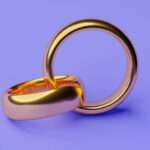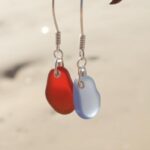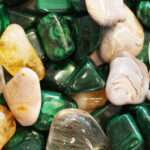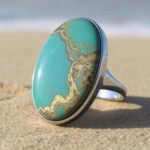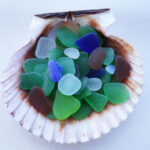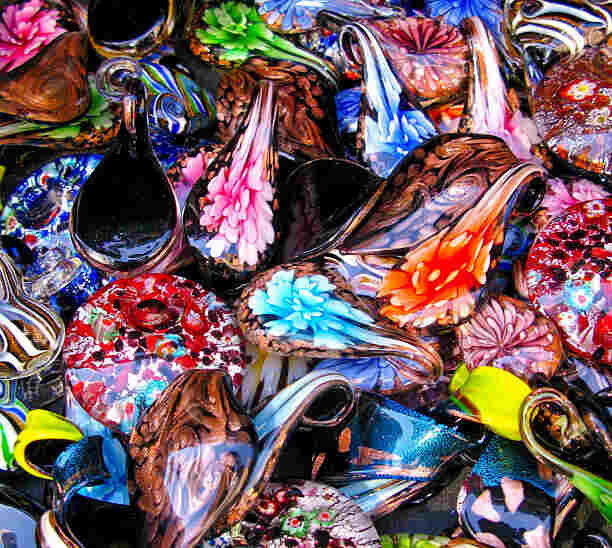The Natural Process of Making Sea Glass
We find the journey of old glass turning into a precious, frosted gem fascinating. The question of how sea glass is made naturally has caught our attention. We want to learn about the unique traits and elements that make it special.
The making of sea glass is a complex process. It involves natural elements that shape and smooth the glass over time. As we dive into the world of ocean glass, we’ll uncover the details of its natural creation.
What Exactly Is Sea Glass?
Sea glass is a type of glass that has been smoothed by nature. It forms when glass meets the elements like wind, water, and sand. These forces wear down the glass, giving it a frosted look.
Sea glass comes in many colors, shapes, and sizes. Its look depends on where it came from and how long it was exposed to the elements. The process of making oceanic glass is complex, involving glass type, environment, and time.
Definition and Basic Characteristics
Sea glass is known for its smooth edges and frosted look. It comes in colors like clear, brown, green, and blue. People use it to make jewelry, decorations, and other crafts. Where to buy sea glass, click here.
Historical Origins of Sea Glass
Sea glass has been around for centuries. It started when glass was first made and thrown into the ocean. Over time, it became a unique and beautiful glass type, loved by collectors and craftspeople.
Different Types of Sea Glass
There are several types of sea glass:
- Clear sea glass: This is the most common and often used for jewelry and decorations.
- Colored sea glass: Less common than clear, it’s more sought after by collectors.
- Frosted sea glass: Has a matte finish and is used for decorations.
Sea glass is a unique and beautiful glass type. It’s made through natural processes and is prized for its smooth edges and frosted look. It’s popular for crafts and decorations.
How Is Sea Glass Made Naturally?
Have you ever wondered how oceanic glass is made? It’s a fascinating process that involves waves, sand, and time. The oceanic glass weathering process gives it a unique look and feel.
The ocean’s forces are key in making oceanic glass smooth and frosted. Waves toss the glass around, rubbing it against sand. This can take years, decades, or even centuries.
- Wave action: Waves smooth out the glass’s edges and surfaces.
- Sand and sediment: Sand’s abrasive nature wears down the glass, creating a frosted look.
- Time: The longer the glass is in the ocean, the more it changes.
These factors combine to create the weathered glass we find on beaches. Knowing how oceanic glass is made helps us see its value and beauty.
| Factor | Description |
|---|---|
| Wave Action | Smooths out edges and surfaces |
| Sand and Sediment | Wears down glass, gives frosted appearance |
| Time | Transforms glass over years, decades, or centuries |
The Chemical Transformation Process
The making of ocean glass involves many chemical changes. These changes alter the glass’s surface and structure. We will look into how oceanic glass is created and what makes it special.
At the core of oceanic glass formation is the interaction between the glass and its surroundings. When glass meets water and other elements, it hydrates and dealkalizes. This weakens its surface and makes it more likely to weather.
Hydration and Dealkalization
Hydration happens when water molecules get into the glass’s surface. This causes it to expand and contract. This can lead to small cracks and fissures, breaking down the glass over time.
Surface Changes During Formation
As the glass weathers, its surface changes a lot. It becomes frosted and etched, getting a smooth, matte finish. These changes come from chemical reactions between the glass and its environment.
Timeline of Transformation
The time it takes for ocean glass to form varies. It depends on the glass type, environment, and how much it’s exposed to water and other elements. Generally, it can take from a few years to several decades.
| Stage | Description | Timeline |
|---|---|---|
| Initial Weathering | Glass begins to break down and form small cracks | 1-5 years |
| Hydration and Dealkalization | Glass undergoes chemical transformations, leading to surface changes | 5-10 years |
| Advanced Weathering | Glass becomes heavily etched and frosted, taking on a smooth finish | 10-20 years |
The Role of Ocean Mechanics
Ocean mechanics are key in making ocean glass. We look at how tides, waves, and sand wear down glass. This makes sea glass unique and valuable.
The ocean’s constant motion, like tides and waves, smooths out glass edges. This process is vital for oceanic glass creation. Important factors include:
- Tidal movements: The tide’s constant flow wears down the glass.
- Wave action: Waves pounding the shore smooth out the glass.
- Abrasive nature of sand and pebbles: Beach sand and pebbles wear down the glass.
These elements help create ocean glass naturally. The mix of ocean forces and beach abrasives makes oceanic glass formation complex and interesting.
Environmental Factors Affecting Sea Glass Formation
Many environmental factors shape the oceanic glass weathering process. These include water temperature, pH levels, and seasonal changes. These elements can influence how quickly glass breaks down and what kind of oceanic glass forms.
Understanding how the ocean creates oceanic glass helps us recognize these factors. The process breaks glass into smaller, smoother pieces, and the ocean further shapes them.
Water Temperature Impact
Water temperature is key in the ocean glass weathering process. Hotter water speeds up the process, while colder water slows it down.
pH Levels and Their Effect
pH levels in the water also matter. Different pH levels can change how fast chemical reactions happen during the transformation.
Seasonal Variations
Seasons can also change how ocean glass is formed. Changes in ocean currents, waves, and temperature during different seasons affect oceanic glass creation.
Here is a summary of the environmental factors that affect sea glass formation:
- Water temperature
- pH levels
- Seasonal variations
Understanding these factors helps us appreciate how oceanic glass is made. It also shows why each piece is unique.
| Environmental Factor | Impact on Sea Glass Formation |
|---|---|
| Water Temperature | Affects the rate of the oceanic glass weathering process |
| pH Levels | Influences the rate of chemical reactions during transformation |
| Seasonal Variations | Impacts the formation of ocean glass through changes in ocean currents and waves |
Common Sources of Natural Sea Glass
Many of us wonder how nature creates ocean glass. We want to understand the journey it undergoes. Sea glass begins on shores, in oceans, and near coastal areas where people once dumped waste. Constant waves and tidal activity shape and transform it into ocean glass.
The transformation of glass into oceanic glass is a natural process. It smooths out edges and gets a frosted look. This can take years or even decades. The water’s temperature, pH levels, and seasons all play a role in this process.
Here are some common places to find natural sea glass:
- Beaches with high tidal activity
- Shipwrecks and sunken vessels
- Historical dumping grounds for waste
- Coastal areas with frequent storms
Learning about sea glass’s natural creation helps us value its beauty. By exploring these sources, we can find ocean glass. We also learn about its history and importance.
Identifying Authentic Sea Glass
To spot real sea glass, we look for specific signs. It has a smooth, frosted look from years of weathering. This process, called coastal glass formation, can take decades.
Sea glass often comes in colors like brown, green, and clear. These come from old bottles. Rare colors like blue and red are especially sought after by collectors. Knowing the color’s origin helps us understand the ocean glass’s history.
Physical Characteristics
Real oceanic glass is smooth and frosted. It might have pitting or etching. Its edges are rounded, and it’s thinner and more delicate than regular glass.
Testing Methods for Authenticity
To check if oceanic glass is real, we use several methods. These include:
- Looking at it under magnification for wear signs
- Testing for specific chemicals or minerals found in sea glass
- Comparing it to known authentic ocean glass
Knowing how sea glass is made helps us identify it. Whether you’re a seasoned collector or new, knowing how to spot authentic oceanic glass is key. It helps build a valuable and meaningful collection.
Prime Locations for Finding Sea Glass
Exploring the world of sea glass means knowing where to look. The ocean’s glass formation creates perfect spots for hunters. We’ll show you the top places around the globe, with beaches known for their ocean glass.
The weathering process affects oceanic glass quality and quantity. So, we’ve listed the best spots for ocean glass lovers:
- Berkeley Beach in California, USA
- Glass Beach in Fort Bragg, California, USA
- Hanalei Bay in Kauai, Hawaii, USA
- Camber Sands in East Sussex, UK
- Sea Glass Beach in Seaham, UK
For finding ocean glass, the right conditions are key. Look for it during low tide, after storms, and where it’s quiet. Knowing how oceanic glass forms and weathers can help you find more.
As we search for ocean glass, let’s remember to care for the environment and follow local rules. Happy hunting!
| Beach Location | Best Time for Collection | Notable Features |
|---|---|---|
| Berkeley Beach | Low tide, after storms | Abundant ocean glass, scenic views |
| Glass Beach | Early morning, late afternoon | Colorful ocean glass, unique rock formations |
The Rarity Scale of Sea Glass Colors
Sea glass colors vary in rarity, depending on how they formed and their origins. We’ll explore what makes some colors rarer than others. This information is valuable for oceanic glass collectors.
Red and orange oceanic glass are rare because manufacturers rarely used these colors. In contrast, clear, brown, and green oceanic glass are more common because glassmakers used these colors more frequently.
Here are some factors that affect the rarity of sea glass colors:
- Original source of the glass
- Conditions during the process of oceanic glass formation
- Availability of certain colors during the origins of oceanic glass creation
To understand ocean glass colors’ rarity, you need to know about their formation and history. This knowledge helps collectors see the value and uniqueness of their finds.
| Color | Rarity | Factors Contributing to Rarity |
|---|---|---|
| Red | Rare | Limited use in the past |
| Orange | Rare | Limited use in the past |
| Clear | Common | Widely used in glass production |
| Brown | Common | Widely used in glass production |
| Green | Common | Widely used in glass production |
Environmental Impact and Conservation
Exploring how the ocean naturally creates sea glass shows us its environmental impact. The ocean weathers glass, transforming it into smooth, frosted ocean glass. Understanding this natural process highlights the need for conservation.
The decline in oceanic glass production is mainly due to recycling and waste management. These efforts have cut down on glass waste in the ocean.
The process of making ocean glass naturally is slow, taking years. Many environmental factors shape it. To preserve the beauty of ocean glass, we must protect the marine areas where we find it.
- Reducing plastic waste and pollution in the ocean
- Implementing sustainable waste management practices
- Protecting coastal areas and marine ecosystems
Understanding oceanic glass production and supporting conservation helps preserve it for the future. The natural process of making sea glass requires patience and care. Protecting the environments where it’s formed is crucial.
As we learn more about ocean glass, we see the need to protect our oceans and reduce waste. Together, we can keep ocean glass and its ecosystems beautiful.
Commercial Uses and Value
Sea glass is not just a natural treasure from the coast. It also holds great commercial value. Its rarity and condition can make it very valuable. This makes it popular for jewelry, decorations, and collectibles.
The way oceanic glass forms in the ocean is key to its value. The longer it takes to form, the more valuable it becomes. Especially if it turns into a rare color.
- Jewelry: Artisans craft unique, handmade jewelry pieces, such as pendants, earrings, and rings, from ocean glass.
- Decorative items: Crafters use oceanic glass to create decorative items, such as vases, bowls, and paperweights.
- Collectibles: Collectors highly prize rare and colorful sea glass beads, seeking to add unique pieces to their collections.
The demand for oceanic glass comes from its beauty and rarity. The process of forming it by the coast adds to its value. This makes ocean glass a valuable item, with some pieces selling for high prices.
In Conclusion: The Timeless Appeal of Nature’s Recycled Treasure
Exploring sea glass formation has shown us its timeless beauty. Each piece is a unique work of art, shaped by the ocean’s power. It shows how nature can transform human waste into something beautiful.
The process of oceanic glass formation is amazing. It shows how this material can change and adapt. The ocean glass weathering process proves that beauty can come from old things.
We hope readers will look for oceanic glass along coastlines. Each piece has a story to tell. Let’s keep these treasures safe for future generations to enjoy.
FAQ: Sea Glass Facts and Creation
Q1. Is sea glass artificial or natural?
Ans: Sea glass begins as human-made glass (e.g., bottles, jars) but becomes naturalized through decades of tumbling in the ocean, which smooths and frosts its surface.
Q2. What color sea glass is rarest?
Ans: The rarest colors are orange, red, and turquoise due to their limited historical use. Black (from pre-1900s glass) and pink are also uncommon.
Q3. How is sea glass created?
Ans: Glass debris is weathered by waves, sand, and rocks over 20–40 years, smoothing sharp edges and creating a frosted, matte texture.
Q4. Why is ocean glass illegal to collect in some areas?
Ans: Removing oceanic glass is banned in protected beaches to preserve ecosystems and prevent overharvesting. Always check local regulations before collecting.
Q5. Is sea glass expensive?
Ans: Rare colors or large, well-worn pieces can cost 10–500+. Common colors (green, brown) are less valuable but still prized by collectors.
Q6. Can you make ocean glass at home?
Ans: Yes, using a rock tumbler with glass, water, and abrasives. However, homemade versions lack the ocean’s unique aging and texture.
Sea glass blends human history with nature’s artistry, offering beauty and a connection to the past. Respect local laws when hunting for treasures!



